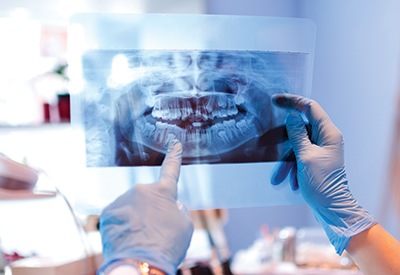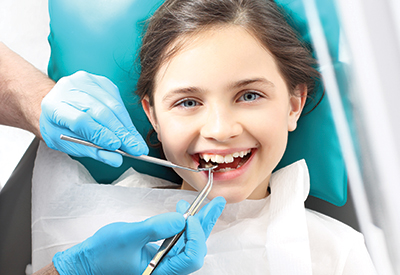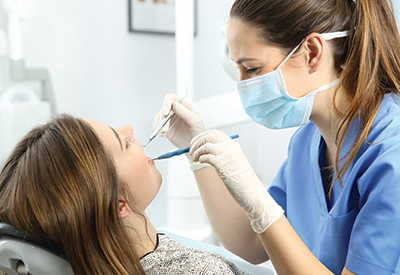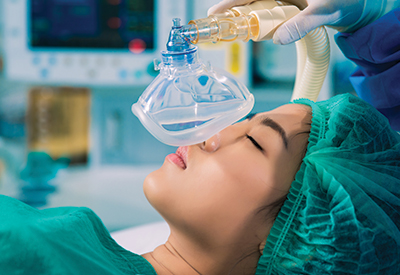
İstanbul Galata Üniversitesi Diş Hekimliği Fakültesi Hastanesi
Restorative Dental Treatment

Restorative Dentistry is the department that aims to repair material losses in dental hard tissues caused by caries, abrasions, or fractures, to eliminate developmental and/or hereditary structure, shape or color disorders in these tissues, and to restore chewing, speaking functions and aesthetic appearance to patients. In our department, in addition to "Aesthetic", "Adhesive" or "Cosmetic" Dentistry practices, studies are also carried out in the fields of " Gerodontology " and "Cariology (caries science)".
Treatments performed in this department:
Restorative Procedures:
Composite restorations (fillings) of anterior and posterior teeth
Application of onlay, inlay, overlay and endocuron restorations to the posterior teeth.
Composite or ceramic laminate veneers
Diastema closure (Closing the gaps between the teeth with composite restoration)
Office or home bleaching treatments (vital bleaching)
In-office or at-home teeth whitening treatment (vital whitening)
Whitening treatment applied to discolored teeth due to root canal treatment (devital bleaching)
Removal of shallow discolorations with microabrasion
Pulp capping treatments (Direct and indirect capping)
Fiber post application
Adhesive bridge
Treatment of tooth wear with composite restorations
Restorations applied with CAD-CAM systems.
Protective Applications:
Dentin hypersensitivity treatment with laser
Fluoride applications to prevent caries and sensitivity
Remineralization of initial caries with resin infiltration (ICON) application
What is Laminate veneer and to whom can it be applied?
Porcelain laminate veneer treatment (leaf porcelain) is performed by covering the front teeth with aesthetic problems such as deformity or discoloration with a thin porcelain or composite material that imitates the appearance of natural teeth, with minimal abrasion on the front surfaces only. In order to apply this treatment, the patient's gums must be healthy and oral hygiene is at a very good level. In addition, the patient should not have habits such as excessive teeth clenching or nail biting. This treatment can be applied to individuals who have gaps between their front teeth, have old and discolored anterior composite restorations, and have deformities/wear on their teeth.
How is teeth bleaching done? Is it harmful to teeth?
Bleaching is done by two methods: office type and home type. In the Office bleaching, bleaching gels are applied to the teeth by the dentist and, if necessary, activated with high-power light devices. This process takes an average of 30-45 minutes and can be applied in 2 or 3 sessions depending on the degree of discoloration of the teeth. In home bleaching, home bleaching agents are used by the patient for 1-2 weeks with a bleaching plate prepared by the dentist. The bleaching process is carried out by removing the colored pigments in the enamel structure and does not cause any harm to the tooth.
How can we prevent our teeth from caries formation?
To protect against tooth caries, it is necessary to stay away from sugary foods that accumulate on the teeth and acidic drinks, and consume hard foods such as cheese, xylitol gum, which regulate mouth acidity, and leave less residue on the teeth, such as hazelnuts, walnuts, and peanuts. Teeth should be brushed at least twice a day with a toothpaste containing fluoride, and oral hygiene should be supported by using dental floss and mouthwash. A dentist check-up is required every 6 months to detect caries that have just started and are at a level that can be stopped.
Is tooth caries remineralizable? Should every decayed tooth be filled?
Small and incipient caries in the enamel tissue of the teeth can be stopped by improving oral hygiene, applying remineralization agents such as fluoride and resin infiltration (ICON) in that area, and calcium and phosphate minerals obtained from milk and dairy products consumed regularly with saliva. However, caries involving the dentin layer beneath the enamel tissue are irreversible. In these cases, it is necessary to remove the carious tissue and fill it with restorative materials.

Oral, Dental, and Maxillofacial Surgery
Oral and maxillofacial surgery, a specialized field situated at the crossroads of dentistry and medicine, deals with various surgeries within or ar
Detaya Git
Oral, Dental, and Maxillofacial Radiology
Department of Oral and Maxillofacial Radiology, where intraoral and head-neck region tissues and organs are systematically examined, and all change
Detaya Git
Pediatric Dentistry (Pedodontics)
Pedodontics is a branch of dentistry dedicated to children. It aims to establish oral and dental health at an early age by focusing on the preserva
Detaya Git
Orthodontics
It is a branch of dentistry that undertakes the diagnosis, treatment and prevention of crowded teeth, deviations in the jaws and facial irregularit
Detaya Git
Endodontics
The diagnosis, treatment, and prevention of illnesses and injuries affecting the dental pulp and adjacent tissues are the main goals of the special
Detaya Git
Prosthetic Dental Treatment
It is the branch of dentistry that deals with the identification, planning, diagnosis, rehabilitation, and upkeep of patients' comfort,
Detaya Git
Restorative Dental Treatment
Restorative Dentistry is the department that aims to repair material losses in dental hard tissues caused by caries, abrasions, or fracture
Detaya Git
Periodontology
Periodontology is a branch of dentistry that examines the tissues surrounding teeth and dental implants (gums, jawbone, etc.), deals with the diagn
Detaya Git
Anesthesiology and Reanimation
Istanbul Galata University Dental Hospital has a fully equipped operating room where anesthesia and reanimation can be implemented. This procedure
Detaya Git
